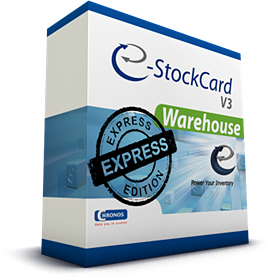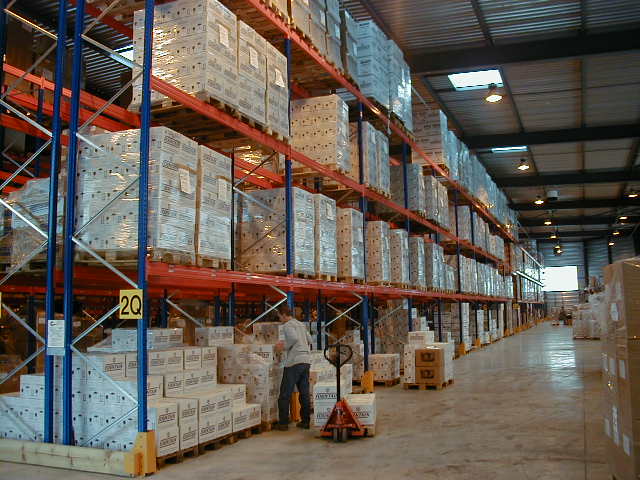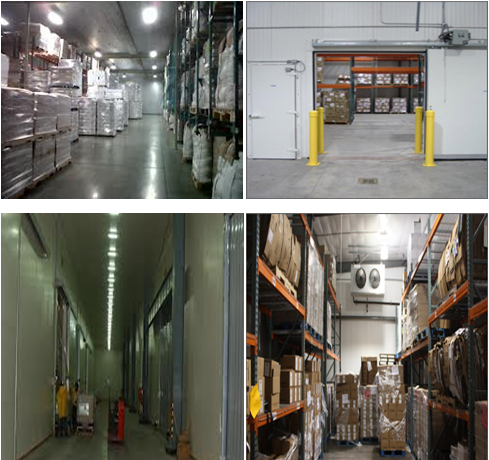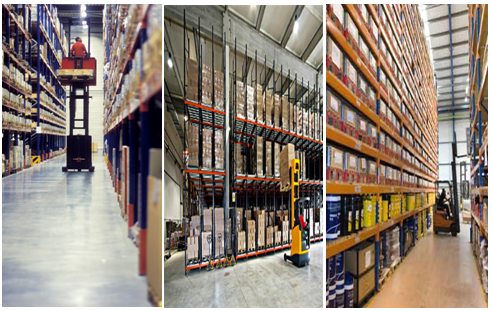
Clean The Place
It is amazing what you’ll find in the warehouse when you just clean it on a weekly basis. Mystery inventory such as returned goods, damaged goods and special buyouts won’t have any place to hide.
Beyond the ability to move more quickly in the facility, your team will begin to develop a greater sense of pride in their workplace. Remember, this is the place where all your cash is stored. You want a team that protects your cash from the outside threats of salespeople, truck drivers, and manufacturer reps.
Give Personnel an Identity
Your warehouse employees work with your cash all day long. Make shirts for them that say “Vault Security Team” or “Vault Management Team” or something similar that signifies the importance of what they do.
This does a couple of things. First, it reminds them that inventory has value. Second, it helps identify those people who belong in the warehouse.
A key element in keeping a secure warehouse is to eliminate those folks who have no business being in there.
Increase The Receiving Area
When most people are designing a warehouse, they tend to cram as many racks of inventory into the space as possible. Usually as an afterthought, they carve out enough room for a little desk by the dock door, run a terminal to it and call it the receiving department.
Here’s the problem: Most inventory errors start in receiving. If you make a mistake here, 10 additional problems will occur in the company. Start by giving them adequate room to work. You’ll see your inventory adjustments decrease immediately.
Put Senior People In Receiving
Why do we always put rookies in receiving? As I mentioned earlier, mistakes in receiving cause multiple headaches down the line. Make sure you get it right coming in the door.
Pay your receiving clerks well, and encourage them to stay in the position. Remember, you’ll always have more products coming in than going out.
Receiving is your one place to get it right the first time so you don’t have to redo orders later because of receiving errors.
Create Signage
Don’t assume your newer employees can navigate the aisles. Help them out. Create colorful signs to direct them to aisles or bins. Warehouse maps are a great way to increase productivity immediately. Clearly label any and all landmarks.
Try this: Ask one of your friends to come into your warehouse and pick an order. If your warehouse is set up correctly, they should achieve a high success rate without asking questions on every item. It needs to be that easy.
Add Descriptions To Pick Tickets
Most item databases will allow you to add multiple lines of description to any SKU in the system. Use them and you’ll increase the order pickers chance of pulling the right product.
Put in physical descriptions like “the blue one” or “two wheel.” This is especially critical when you’re talking about minimum quantities. Make it clear that the “each” actually refers to the pair that’s in the pack, not to one of the two.
This simple change will help you eliminate future dead stock. Don’t worry about killing a few extra trees. They grow back.
Double Check Orders
A really bad motto for a distribution company is “We fix our mistakes faster than anyone else in the business.”
For the typical distributor, the cost to process an order is significant.
In order to get it right the first time, install a method of double-checking using one of your seasoned veterans. This is especially important if you have new people picking orders.
Create Color Coded Labels
In order to make it easier for your delivery staff, develop a custom colored label for each of your most valuable customers. Make sure every package you deliver to that customer has that label.
Your drivers will be able to quickly identify those orders. You don’t want to make mistakes on orders to your best customers.
Implement “Days Work In A Day”
Simply stated: “What is started today, must be completed today.” If you receive it, it must be put away. If an order is put in the system and a pick ticket is printed, it must be picked and shipped or staged.
In order to make this happen, create cut-off times. Order processing must end at a defined time. We need to give the warehouse a chance to finish the day.
Implement Cycle Counting
Most of us know what it is. Some of us recognize the benefits. Few of us have made it part of our standard operating procedures. Cycle counting will increase the accuracy in your systems.
By examining inventory daily, you’ll find those mystery items that have found their way to the shelves. You can correct items that have been put in the wrong place. You can rotate stock. The list can go on indefinitely.
Cycle counting is penicillin for distributors because it attacks so many little problems and solves them on a timely basis.






